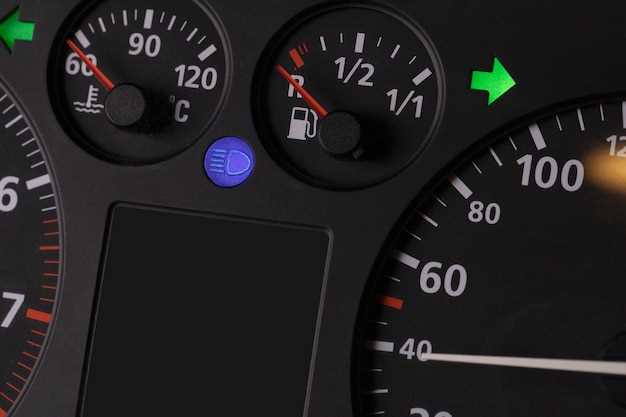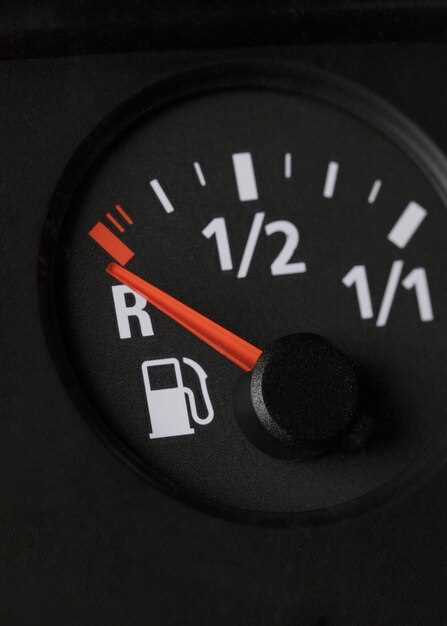

Effective diagnostics of fuel system issues in diesel engines is crucial for maintaining optimal performance and reliability. Diesel engines rely on a finely tuned fuel system to ensure efficient combustion, and any malfunction can lead to significant consequences. Understanding the nuances of these systems enables technicians to identify problems early, preventing costly repairs and extensive downtime.
In a diesel engine, the fuel system consists of several components, including fuel pumps, injectors, filters, and lines. Each part plays a vital role in delivering the correct amount of fuel at the right pressure and timing. Therefore, a systematic approach to diagnosing fuel system problems is essential for pinpointing the origin of performance issues, such as reduced power, increased emissions, or difficulties starting the engine.
Common symptoms of fuel system problems may manifest as hesitations during acceleration, engine misfires, or inconsistent idle. By utilizing specialized diagnostic tools and methodologies, technicians can assess the health of the fuel system, ensuring that each component functions optimally. This not only enhances engine performance but also extends the lifespan of the vehicle, making regular diagnostics an invaluable practice for diesel engine maintenance.
Identifying Common Symptoms of Fuel System Failures

Proper functioning of the fuel system is essential for optimal performance in diesel engines. Recognizing the common symptoms of fuel system failures can aid in timely diagnostics and repairs. Below are some key indicators to watch for.
1. Hard Starting or No Start: Difficulty in starting the engine or a complete inability to start often signifies issues within the fuel system. Problems may stem from clogged filters, failing fuel pumps, or air leaks that allow fuel to escape.
2. Poor Engine Performance: A noticeable reduction in power, hesitation during acceleration, or stalling can indicate that the fuel system is not delivering the right amount of fuel to the engine. This could be due to dirty injectors or low fuel pressure.
3. Unusual Noises: If the diesel engine exhibits unusual sounds, such as whining or knocking, it may indicate that the fuel system is malfunctioning. These sounds could arise from a failing fuel pump or debris obstructing fuel flow.
4. Smoke Emission: Excessive black, white, or blue smoke from the exhaust is a clear symptom of fuel issues. Black smoke may suggest an excessively rich fuel mixture, while white smoke can indicate incomplete combustion or fuel system contamination.
5. Fuel Leaks: Any visible signs of diesel fuel leaking around injectors, fuel lines, or the fuel tank indicate a critical failure in the fuel system. Such leaks not only compromise engine performance but also pose safety hazards.
6. Fuel Odor: A strong smell of diesel around the engine or fuel lines may suggest a leak or a failure in the fuel system seal, leading to potential engine problems and environmental concerns.
By being vigilant and recognizing these symptoms, diesel engine owners can address fuel system failures early, ensuring safe and efficient engine operation.
Utilizing Diagnostic Tools to Assess Fuel Delivery Issues

Effective diagnostics in diesel engines primarily depend on a thorough understanding of the fuel system and the application of specialized tools. Identifying fuel delivery issues requires a systematic approach using diagnostic instruments designed to analyze various components, including fuel pumps, filters, injectors, and pressure regulators.
One of the essential tools for fuel system diagnostics is the fuel pressure gauge. By measuring the fuel pressure in the system, technicians can determine if it falls within the manufacturer’s specified range. Low pressure may indicate a failing pump or clogged fuel filters, while high pressure could suggest a malfunctioning pressure regulator.
Another critical diagnostic tool is the fuel injector tester, which helps assess injector performance. Through this device, technicians can evaluate the spray pattern, atomization, and flow rate of the injectors. Poor injector performance can lead to misfiring and a significant loss in engine efficiency.
Additionally, utilizing a scan tool for electronic diagnostics allows technicians to analyze engine management data, including fuel trim values and diagnostic trouble codes (DTCs). This information is vital for pinpointing the root cause of fuel delivery problems, whether they stem from sensor issues, wiring faults, or more complex electronic malfunctions.
Also, employing a flow meter can provide insights into the overall health of the fuel system. By measuring the volume of fuel delivered under various operating conditions, technicians can identify irregularities that might point to restrictions, leaks, or pump deficiencies.
Fuel sample analysis is another effective diagnostic method. Taking a sample and examining it for contaminants, such as water and sediment, can reveal problems that may impair fuel quality and delivery. It also aids in determining the need for fuel system cleaning or component replacement.
By leveraging these diagnostic tools, technicians can accurately assess fuel delivery issues in diesel engines, facilitating timely and effective repairs. This precision not only enhances engine performance but also ensures the longevity of the engine and its components.
Implementing Troubleshooting Steps for Fuel Injector Malfunctions
Diagnosing issues with fuel injectors in diesel engines is crucial for maintaining optimal performance. When problems arise, a systematic approach to troubleshooting can help identify the root cause effectively.
Step 1: Visual Inspection – Begin by examining the fuel system components for any signs of leaks or physical damage. Check the fuel injectors for cracks, corrosion, or loose fittings. Ensure that the fuel lines are securely attached and free from degradation.
Step 2: Check Electrical Connections – Inspect the electrical connectors leading to each fuel injector. Look for frayed wires, corrosion, or poor connections. A malfunctioning electrical system can hinder injector performance and lead to misfires.
Step 3: Measure Fuel Pressure – Use a fuel pressure gauge to verify that the fuel delivery system provides adequate pressure. Low pressure may indicate a failing fuel pump, clogged fuel filter, or a malfunctioning pressure regulator. Ensure that the system is within manufacturer specifications.
Step 4: Test Fuel Injector Operation – Conduct an injector balance test using a diagnostic scanner or a scope. This process will help determine if each injector is delivering the correct amount of fuel. Inconsistent fuel delivery suggests that certain injectors may be clogged or failing.
Step 5: Clean or Replace Injectors – If testing reveals that an injector is not operating properly, attempt to clean it using ultrasonic cleaning methods or injector cleaning solutions. If cleaning does not resolve the issue, replacement may be necessary to restore functionality.
Step 6: Perform a Smoke Test – To check for vacuum or pressure leaks within the intake system, perform a smoke test. Any leaks can affect the fuel-air mixture and impact injector performance, leading to inefficient combustion.
Step 7: Review Engine Diagnostics – Finally, analyze any diagnostic trouble codes (DTCs) stored in the engine control unit (ECU) related to the fuel system. These codes can pinpoint specific injector issues or related malfunctions elsewhere in the fuel system.
By following these steps methodically, identifying and resolving fuel injector malfunctions in diesel engines becomes a more manageable task, ensuring reliable engine performance and efficiency.






